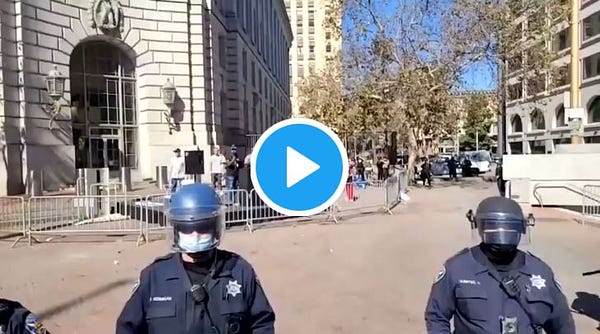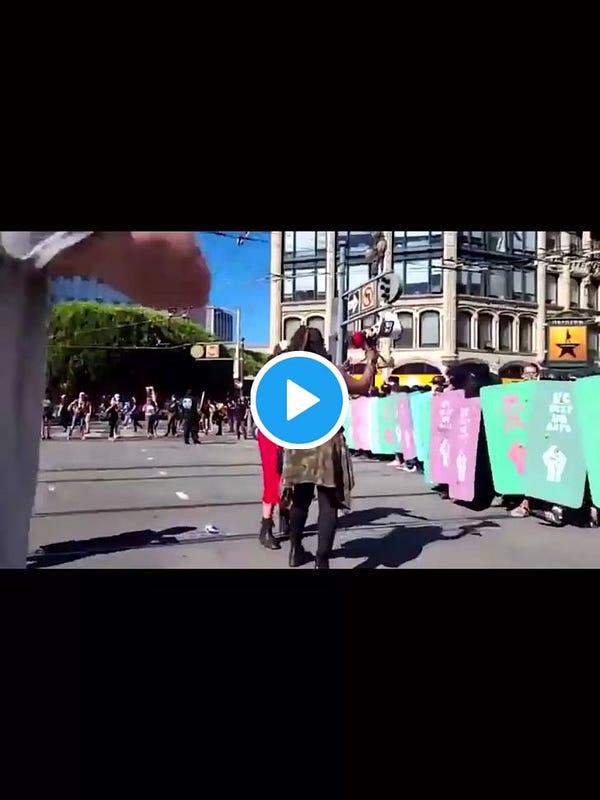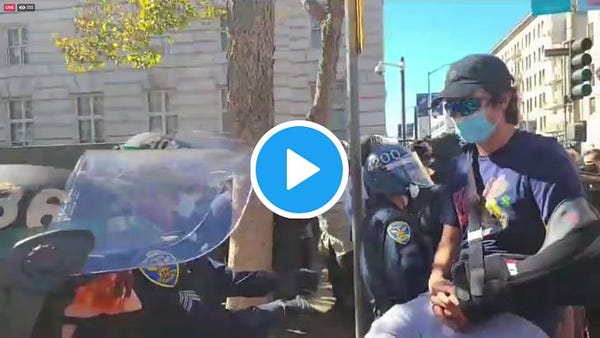Weekly Insurgent 10/26/2020
Welcome to Contextual Insurgent Project by Erin Smith. Writer, researcher, and activist
Sign up now so you don’t miss the first issue.
In the meantime, tell your friends!
This is your inaugural contextual insurgent weekly roundup, where I link you to a selection of the previous week’s previous notable events/articles/tweets and contextualize them with a short analysis drawn from a synthesis of hands-on experience and theoretical knowledge.
To start this off, please read over my viral interview in Reason (in case you haven’t already) where I cover some basic concepts:
My interview with Andrew Wilkow:
Follow me on twitter at @erinsmithSF and read this tweet thread, where I explain the utility of a dilemma action in shaping the local political terrain:


The next six tweets will be clips from the October 17 Free Speech rally in San Francisco. The rally took place downtown next to Twitter HQ at Market and 10th street, and a handful of free speech activists were opposed by over 500 leftists, including a substantial force of well-equipped black bloc. My comments will primarily critique the police response and antifa tactics.
For starters, notice the dual perimeter with LE deployed in the buffer zone between opposing sides. This is the standard tactic, however SFPD is notably poorly equipped for the role…and they are quite evidently self-conscious about it. No obvious riot munitions or riot gear beyond helmets (lack of gas masks rules out tear gas use) and lack of riot armor means they’re simply not prepared to push this crowd aggressively, and the meek response confirms it.
The shield bloc has seized control of Market Street, the main thoroughfare in San Francisco. The girl with the megaphone steps up and announces the National Lawyers Guild’s jail support number (most experienced rioters have this sharpied on a forearm) she has the crowd chant it back to her, using a tactic called “echoing”. Echoing is mainly used for cases when sound equipment is not available and critical information has to be disseminated to a mass of people quickly and easily, but the repetition also functions as a memory aid.
There’s almost no command presence here, and SFPD has trouble keeping a cohesive line. They’re poorly equipped (although some impact munitions are finally visible) and it has to be demoralizing knowing the radical leftist DA Chesa Boudin isn’t going to back them up. (BTW search twitter for videos from this summer’s outlaw Pride march, when SFPD showed up to enforce covid-19 restrictions they were attacked by such an overwhelming number of marchers that they broke and ran.)
SFPD loses control of the perimeter fence, no real assertiveness seen in response:
Events are surrounded by something known as transitional space, a 2-3 block radius where security forces move closer to the event, businesses tend to close up, and locals make a point to be somewhere else. The streets can be surprisingly empty, and antifa detachments often ambush individuals and small groups in this zone.
The most dangerous location is often actually right at the perimeter, and one big thing people have a really hard time coming to terms with it the fact LE will stand there and watch you get assaulted without intervening; especially if they’re overwhelmed already or in fear of further provoking the crowd.
Watch this clip where the event organizer has his teeth punched out while SFPD stand by and do nothing:

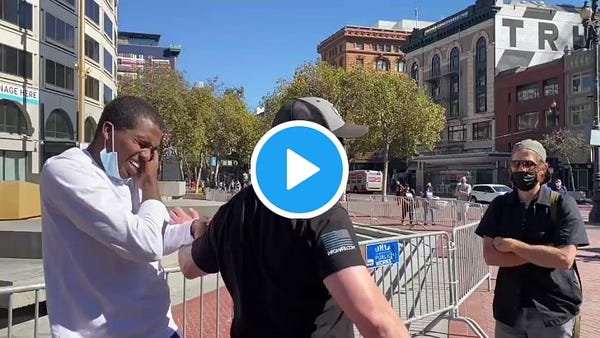
Antifa black bloc affinity groups are easy to spot once you know what to look for, and can be shockingly disciplined and coordinated. go to :17 in the clip below and look at the person at bottom right, listen for “form up form up! Get in formation!” as he spins his finger in the air. You can see the affinity group quickly begin to coalesce.

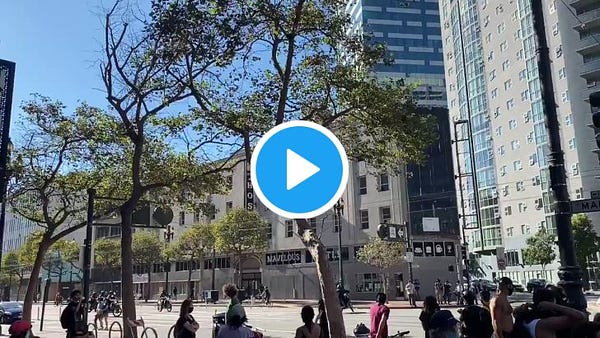
Jacobin published an interesting interview with Jane McAlevey, definitely check out the linked piece below.
Jacobin is the flagship magazine for Democratic Socialists of America(DSA) and Jane McAlevey is the author of No Shortcuts: Organizing for Power in the New Guilded Age. She’s also a protégé of Francis Fox Piven (of Cloward-Piven fame) and probably the closest thing we have to a contemporary Saul Alinsky.
McAlevey is a big proponent of decentralized, bottom-up organizing and spreading a basic minimum skillset to as many allies and sympathizers as possible, whereas Alinsky was very much about centralized groups and having professional organizers do the bulk of the planning.
Oh, and BTW: DSA is the group behind AOC and Rashida Tlaib, and pay attention for my upcoming podcast doing a deep dive into this radical leftist organization.
I hope you found this weekly roundup useful, and please subscribe for future updates!




